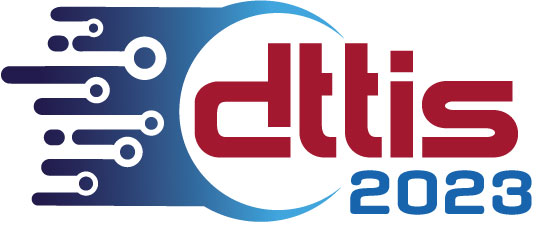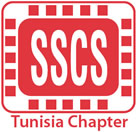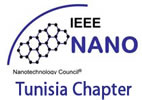IEEE DTTIS’23 Plenary Session
Keynote 1
Circuits and technologies for implantable biomedical devices
Presenter: Full name: Carolina Mora Lopez Affiliation:KU Leuven, Belgium. Email: Carolina.MoraLopez@imec.be |
Presenter Biography:
Carolina Mora Lopez : received her Ph.D. degree in Electrical Engineering in 2012 from the KU Leuven, Belgium, in collaboration with imec, Belgium. From 2012 to 2018, she worked at imec as a researcher and analog designer focused on interfaces for neural-sensing applications. During this time, she was the lead analog designer and project leader of the Neuropixels development project which resulted in the conception and fabrication of the Neuropixels 1.0 and 2.0 neural probes. She is currently the principal scientist and team leader of the Circuits & Systems for Neural Interfaces team at imec, which develops circuits and technologies for electrophysiology, neuroprosthetics and BMI. Her research interests include analog and mixed-signal circuit design for sensor, bioelectronic and neural interfaces. Carolina is a senior IEEE member and serves on the technical program committee of the ISSC conference, ISSCC SRP, VLSI circuits symposium, and ESSCIRC conference.
Presentation:
Biological processes such as neuronal signaling and cell growth are among the most complex micro- and nano-scale processes in nature. Historically such processes have been studied at system level because there were no tools available to study individual components of the process. However, cellular-level interfacing is needed to provide better understanding of the brain and to develop more advanced prosthetic devices and brain-machine interfaces. With semiconductor technology innovations, much recent work has been focused on unraveling biological complexity, but also on driving new diagnoses, treatments and therapies that are tailored to the individual. One of the drivers behind those innovations is novel CMOS circuits enabling multi-modal, high-precision data collection and analysis at ultra-low power consumption. In this talk, I will present recent biomedical developments based on silicon technology, and I will discuss the requirements, materials, circuit techniques and design challenges of their ASIC and SoC platforms.
Keynote 2
It's time to understand the physical mechanism behind deep learning
 |
Presenter Biography:
Habib Hamam obtained the B.Eng. and M.Sc. degrees in information processing from the Technical University of Munich, Germany 1988 and 1992, and the PhD degree in Physics and applications in telecommunications from Université de Rennes I conjointly with France Telecom Graduate School, France 1995. He also obtained a postdoctoral diploma, “Accreditation to Supervise Research in Signal Processing and Telecommunications”, from Université de Rennes I in 2004. He was a Canada Research Chair holder in “Optics in Information and Communication Technologies”, the most prestigious research position in Canada – which he held for a decade (2006-2016). The title is awarded by the Head of the Government of Canada after a selection by an international scientific jury in the related field. He is currently a full Professor in the Department of Electrical Engineering at Université de Moncton. He is OSA senior member, IEEE senior member and a registered professional engineer in New-Brunswick. He obtained several pedagogical and scientific awards. He is among others editor in chief and founder of CIT-Review, academic editor in Applied Sciences and associate editor of the IEEE Canadian Review. He also served as Guest editor in several journals. His research interests are in optical telecommunications, Wireless Communications, diffraction, fiber components, RFID, information processing, IoT, data protection, COVID-19, and Deep learning.
Presentation:
In his keynote speech titled "It's time to understand the physical mechanism behind deep learning," H. Hamam delves into the intriguing world of deep learning and its impact on various domains. Deep learning, powered by neural networks, has become a transformative force, revolutionizing fields such as automatic speech recognition, visual recognition, language processing, and even extending its influence into areas like electroencephalogram analysis, cosmology, and particle physics. Its ubiquity spans across sectors including the economy, healthcare, industry, and education, creating new opportunities and applications.
One pressing question looms over the deep learning landscape: Does there exist a tangible physical mechanism or a comprehensive mathematical theory that underpins this phenomenon? This question is pivotal because unraveling the inner workings of deep learning can provide insights into its utility and limitations. H. Hamam's keynote speech embarks on a journey to explore this fundamental inquiry.
Despite its numerous achievements, deep learning leaves us pondering its true capabilities. What scientific challenges can it genuinely address? What boundaries does it encounter? How will it reshape the scientific landscape? Most critically, is there a concrete physics or mathematical framework that guides this statistical approach? Deep learning appears to rely on randomness, seems enigmatic, and often resembles a black box in its decision-making processes. The question lingers: Is deep learning truly a random process, or does it adhere to scientific principles?
The key takeaway from this enlightening speech is the assertion that there exists a direct correlation between the architecture and weights of neural networks and the mathematical or physical theories that explain the underlying phenomena. In essence, there is a distinct physics that underlies deep learning. H. Hamam proposes that optimizing deep neural network algorithms could be enhanced by revisiting and reinterpreting physical phenomena, such as optical diffraction and the propagation of light, through the lens of established deep learning insights.
In summary, H. Hamam's keynote speech raises essential questions about the nature of deep learning. It emphasizes the need to uncover the physical and mathematical foundations of this remarkable technology, shedding light on its potential and limitations. By bridging the gap between neural network structures and scientific theories, deep learning can be harnessed more effectively, unlocking new possibilities in a wide range of disciplines.
Keynote 3
The Enabling Role of Photonics in Next Generation Digital Systems and Subsystems for future WEB 3.0
Presenter: Full name: Habib Fathallah Affiliation:PhD ECE, Senior Member IEEE & OSA . Email: habib.fathallah@fsb.ucar.tn |
 |
Presenter Biography:
Habib Fathallah, PhD ECE, Senior Member IEEE & OSA
- Full Professor, Computer Department, FSB, Univ. of Carthage, Tunisia.
- Director of IDEA Lab: Artificial Intelligence, Data Engineering and Applications Laboratory”, College of Science of Bizerte, U. Carthage.
- Former Advisor to the Minister of Higher Education and Scientific Research, Tunisia (Four times, 2020-2023)
- Former President CEO of Access Photonic Networks Inc. (Canada, 1999-2005) and co-founder/vice-director of the e-Society Technology Innovation Center (RFTONICS, KSA) (2010-2017).
He received his BSc, M.S. and PhD degrees in Electrical and Computer Engineering from ENIT and Laval University (Canada), respectively in 1994, 1997 and 2001. In September 2016, he joined the Computer Department, College of Sciences of Bizerte, University of Carthage. He was with the College of Engineering of KSU, KSA (2009-2016) and Laval University (Canada) (2003-2009).
He initiated and managed more than 20 Research, Innovation & Development projects involving academia and industry (Nortel Networks, Alcatel, Marconi, Keysight, EXFO, Telus Canada and BCE) in Canada and MENA. He authored 2 books, more than 200 publications, and 13 patents. His research contributions have been cited more than 3000 times with an h-index of 26.
He was also member of the Board of Directors in several companies and institutions in Canada and KSA: Quebec Development Fund (CLD), APN Incorporated, RFTONICS, Pont Intercultural de Quebec, College des Entrepreneurs de Quebec (elected president) dealing with intellectual property management, technology transfer, and high-tech start-ups and participated in the establishment of two techno-poles in Quebec/Canada in photonics and homeland security technologies. His current research interests include AI, IoT, Data Science & Engineering, Data Driven Systems and Networks and Digital Transformation Paradigms.
Presentation:
The acronym WEB3.0 has been recently coined as an emerging paradigm that will enable seamless integration of an important number of disruptive digital technologies including 3D, Virtual \ Augmented \Mixed Reality, Blockchain, Artificial Intelligence, Decentralized Internet, security, etc. The emerging era requires a radical change in the technology landscape calling for ultra high speed systems and subsystems that overcome the traditional limits by many orders of magnitude in terms of speed, bandwidth, latency, performance and even intelligence. These ultra-high speed systems will also function as glassbreakers for future quantum applications including quantum communication, cryptography and sensing. This talk provides a survey about a number of applied projects and prototyping setups and demonstrators helping to contribute in defining future ultra high speed systems and subsystems.












